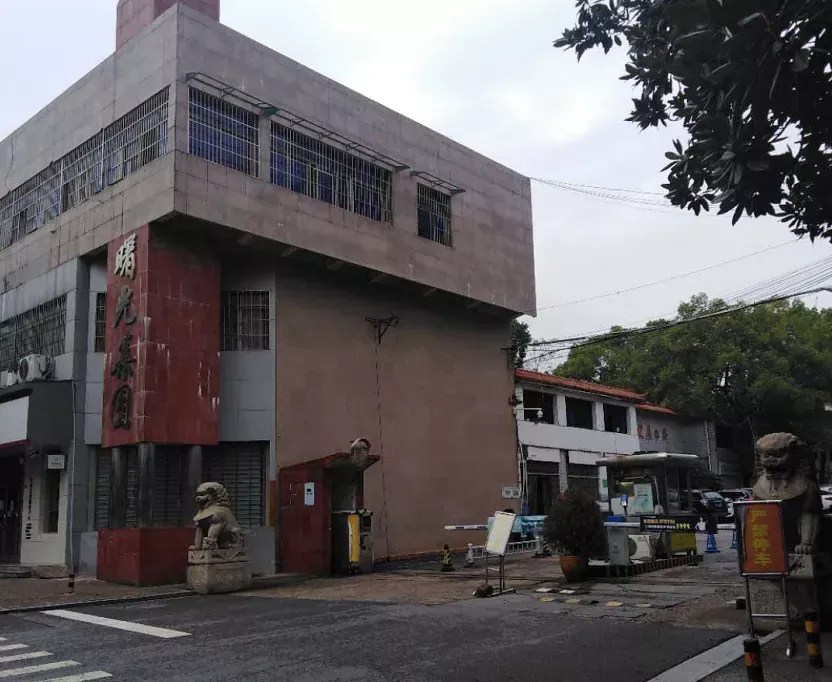According to the older generation in Changsha, the reason why Meizi Mountain is called Meizi Mountain is because in the past it was a place dedicated to burying female "incarnations". In Guihua Village, not far from Meizi Mountain, there was originally a place called Lingziling, which was dedicated to burying male "incarnations".
In the Changsha dialect, "incarnated son" is not a curse word at the beginning, but refers specifically to children who die prematurely underage. In the custom of the Two Lakes region, the young men who died early were buried separately, because they came to collect debts from their parents, so it was very unlucky.
Whether it is a special burial of female "incarnated children", it is difficult to say, after all, before Changsha City was as big as the projectile, most of the suburbs were desolate mountains, and the area around Meizi Mountain was also far away from Changsha City site at that time, which belonged to a relatively remote suburb, and some ancient tombs were normal.
After the founding of the People's Republic of China, Changsha built six major industrial zones, namely: the eastern suburbs (metallurgy, machinery, electronics, light industry) industrial zone, the northern suburbs (light chemical) industrial zone, Pingtang (chemical) industrial zone, Sanfenji (smelting) industrial zone, Xinkaipu (machinery) industrial zone, And Shuling (heavy machinery) industrial zone.
Its middle eastern suburbs industrial areas are concentrated in the area of Meizi Mountain and Yaoling (formerly called Yaoling), and Hu oak, Donggang and Shuguang are representatives of many factories.
Hu Oak, formerly known as 203 Factory, is located in the southeast corner of Yaoling, originally a military enterprise affiliated to the General Logistics Department of the People's Liberation Army, and later turned to expansion and renamed Hunan Rubber Factory.
Changsha Dongfeng Steel Mill has a large factory area, which also has a railway dedicated to the hair line.
Changsha Weighing Instrument Factory is also an old factory founded in 1950, manufacturing a variety of large-scale machinery, electronic special scales and so on.
Changsha Shuguang Electron Tube Factory is one of the most influential factories in the southeast and northwest suburbs of Changsha in the 1960s and 1970s, the predecessor of which was a military enterprise called 770 Factory, which began construction in 1958 in a large area of barren mountains and bald ridges north of Meizi Mountain.
After the completion of the plant, the Corresponding Production Lines were drawn by the Beijing Electron Tube Factory and the Nanjing Electron Tube Factory, and Soviet experts were used to guide the installation. In 1965, Shuguang Electron Tube Factory was officially put into production, in the 1970s and 1980s, there were only 10 tube production workshops in the factory, with more than 4,000 employees, more than 120 R & D technicians, and many also studied in the United States and the United Kingdom..... That was definitely the highlight of the Dawn tube factory.
As various factories were established nearby, a number of factories, schools, and dormitories were built near Meizi Mountain. At that time, the large factories were relatively closed, with kindergartens, children's schools, staff hospitals, bathhouses, canteens and even liquefied gas stations, dance halls, etc., which were completely self-sufficient. Because it is adjacent to many dormitories, Wanggongtang has a large bazaar, and the supper stalls in Meizishan are also famous.
Nowadays, Shuguang Electronics Group has long moved to the new production area of Lugu, and the original site of Changsha Dongfeng Steel has become a Jiarunduo Plaza store..... But Shuguang Road remained here, and the extraordinary years of Hu Oak, Donggang, and Shuguang and the youth spent in Meizi Mountain and Yaoling are urban memories that cannot be forgotten. #长沙往事 #
